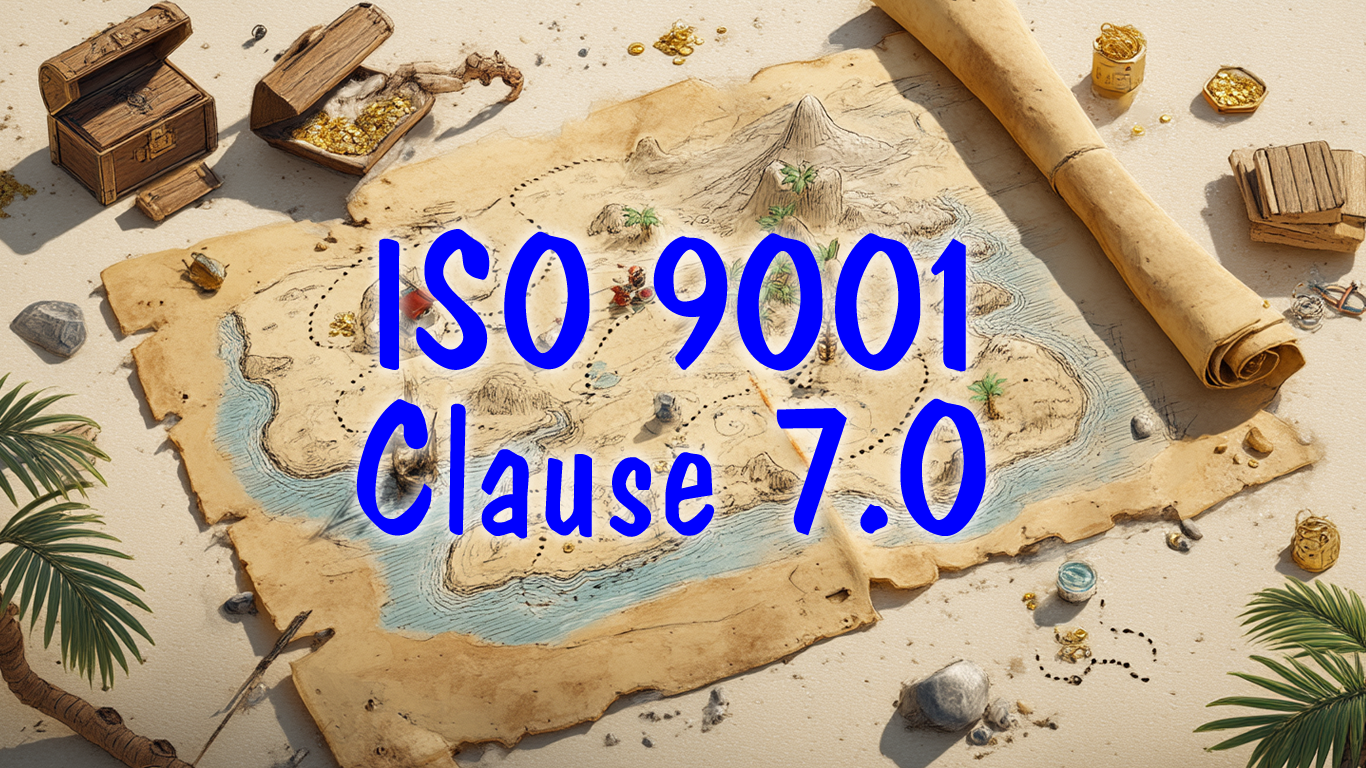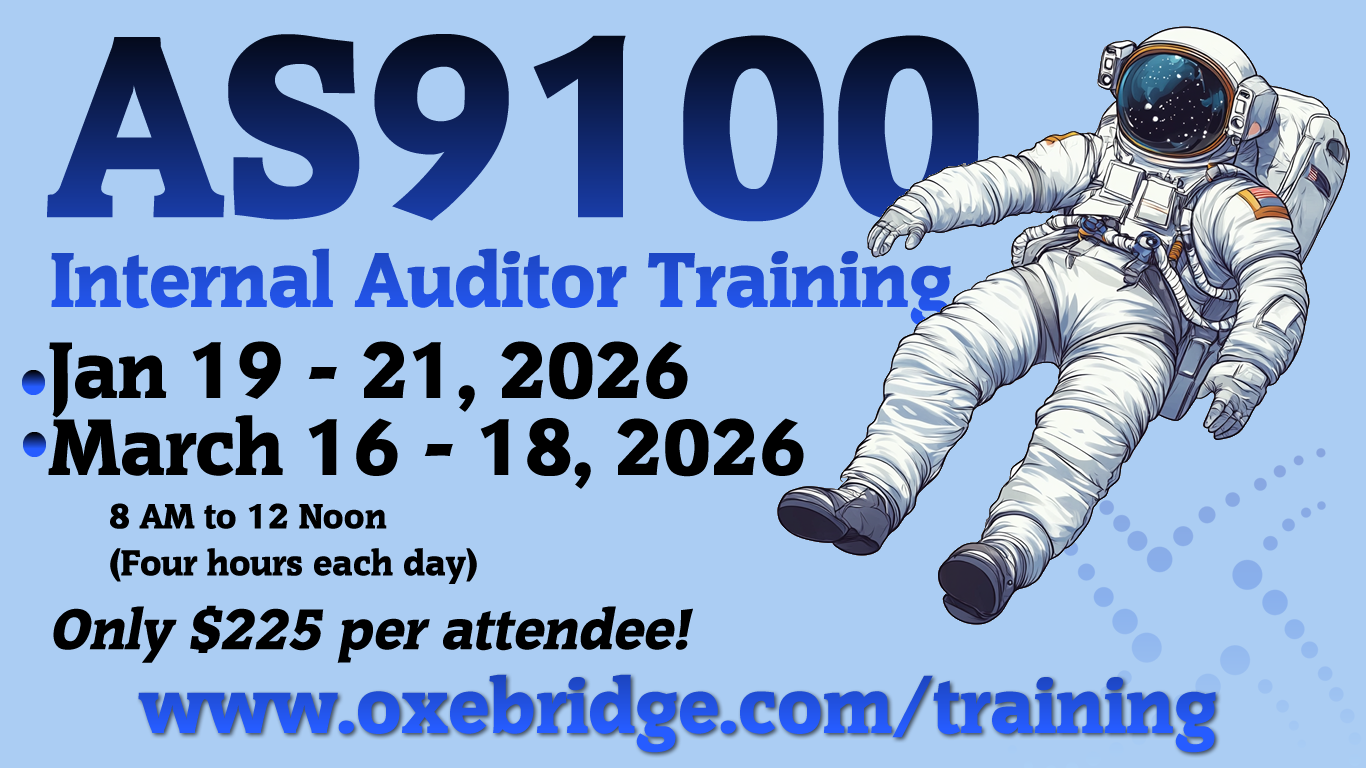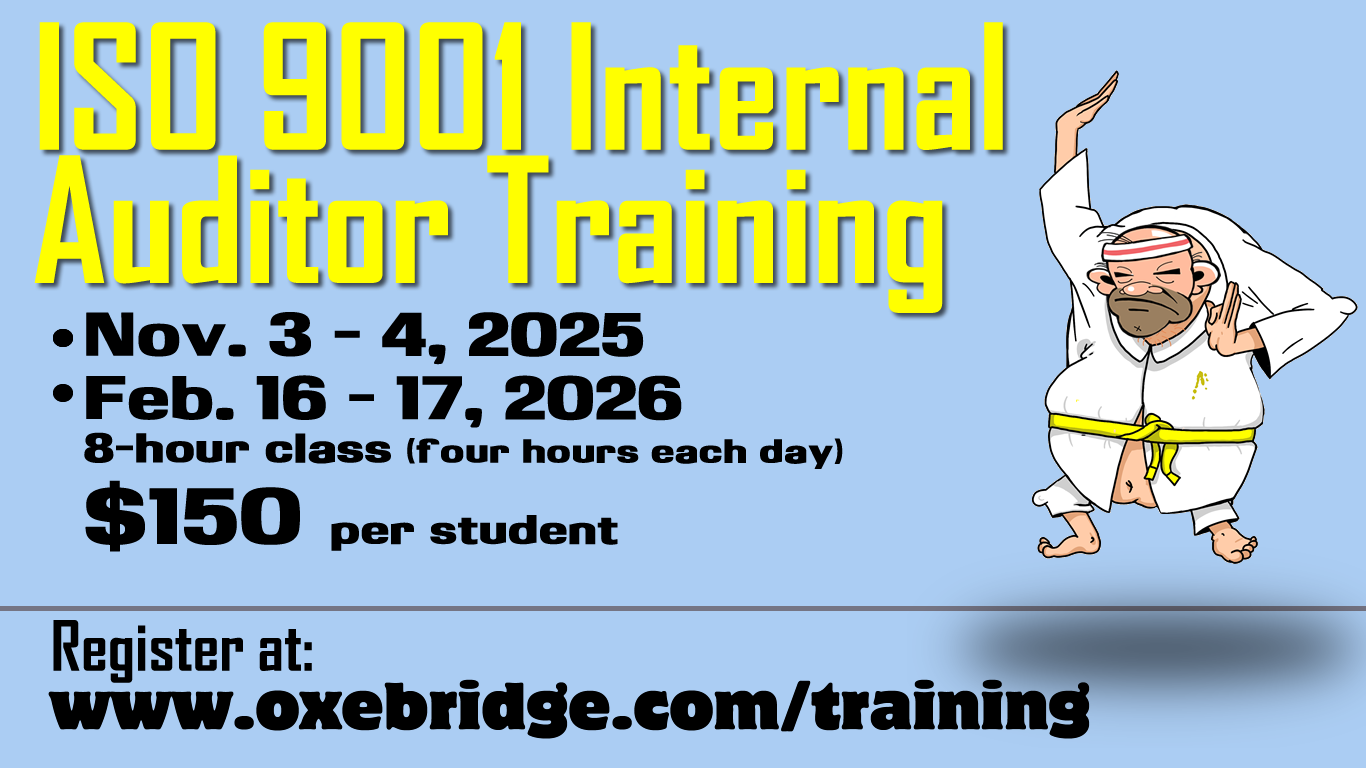Poor clause 7 of ISO 9001, given the less-than-inspiring name of “Support,” often gets read and tossed aside. Whereas many of the clauses of the ISO 9001:2025 standard deserve to be thrown out and started over (I’m looking at you, all of clause 4.0), that’s not going to happen. As it stands now, the next edition (ISO 9001:2026) will maintain all the errors of the current standard and fix nothing.
This means the benefits of clause 7 will remain largely ignored, unfortunately. A simple rewording of things could fix this, but we don’t live in a version of the multiverse where ISO gives us what we want.
Ignoring some of the fluff, clause 7 provides a list of resources that are needed to support the QMS (thus the clause’s name). These are:
- People
- Infrastructure
- Work Environment
- Measurement devices
- Training
- Documentation
You nerds are going to look at that list and see it’s not a literal copy-and-paste from the standard, to which I will say, “Shut up for a minute, nerd.” Some of these are covered by actual clauses, but I am consolidating others. The purpose is to make ISO 9001 useful in the real world, not to prove how we can quote clause numbers.
Let’s see what we mean by each:
- People. Here, the standard is asking if you have enough people to do the work. This isn’t about the quality of people, but the quantity. Are your staffing levels sufficient, or can’t you commit to quality because you simply lack the bodies?
- Infrastructure. This is about facilities, equipment, utilities, and IT support resources you might need to operate. Lacking any of those could lead to a lack of capacity or capability, and thus, bad quality. Now, you get to decide what facilities, equipment, utilities and IT support services apply to your company, but you will need some (if not all) of those.
- Work Environment. This is a subset of “facilities” above, but has to do with the actual places within the buildings where work is performed. Here, the standard is asking if you have the proper controls (lighting, temperature, noise, etc.) to be able to perform work that results in a quality product or service. This is especially important if you have clean rooms or special work areas, but it really does apply to anywhere the work is performed.
- Measuring Devices. If you use some sort of device for inspection or testing (rebranded in this clause as “monitoring and measuring”), then you have to not only provide those, but also make sure they are sufficient for the types of inspection or testing you’re doing.
- Training. The standard next requires you to determine the competency required for staff and then do something to ensure it. Despite them rebranding the clause as “Competence,” everyone knows this means training. I also rope in the following clause on “Awareness” under this bullet, since nearly always training is used to ensure awareness.
- Documentation. Here I am merging the clauses on “organizational knowledge” and “documented information.” This is because the clause on organizational knowledge is just ISO’s way to require documents without ever using the word (it’s taboo now, apparently.) However you interpret it, it means you must have procedures to ensure consistent work.
I skip the clause on “communication” entirely for this context, since the clause is essentially blank and then filled in later under clause 8. It’s also far too obvious to really hammer into; the proper way to communicate in the context I am about to discuss is via documentation, which I’ve already added.
Now that we know what clause 7 is asking for, why is it so important to remember?
Well, later in the standard, ISO 9001 is going to ask you to measure stuff, including product and service quality and process performance. Then, they will make (infuriatingly vague) demands you assess “the effectiveness of the QMS.) While ISO 9001 talks ad nauseam about what to do in cases of nonconforming products (clause 8.7) or other QMS problems (clause 10.2), it never points you back to clause 7, which houses the solutions. That’s frustrating, and it’s why so many people read past clause 7 and never go back to it.
Let me repeat that: when you have a problem, ISO 9001 gives you the answers; they are that list of resources in clause 7!
So, let’s say you have a recurring problem related to your products that you just can’t crack. If you go back to that list, you can see what options you have for improving quality by applying the necessary resources:
- Do we need more people to do the work?
- Do we need more facilities or equipment?
- Do we need more controls in the work environment?
- Do we need more (or different) measurement devices?
- Do we need training?
- Do we need more(or better) procedures?
One (or more) of those will fix the problem, and nearly none of them require spending money. (Buying equipment does, yes, and so does hiring new people. The others, however, are nearly free.)
This menu list of à la carte options works under every single problem you can throw at your QMS. Process not meeting a KPI? Apply one of the resource fixes. On-time delivery is horrible? Ditto. People performing work in a chaotic, uncontrolled manner? See the menu of fixes!
Another great benefit of running back to clause 7 when things go bad is that it neutralizes the emotions. You’re no longer blaming people and starting turf wars. Instead, you’re objectively going through a list of predetermined possible resources that can be selected to fix the problem. Plus, you cut down the time spent on dreaming up solutions dramatically.
Now, I wish clause 10 of ISO 9001 looped back into clause 7. It’s a PDCA loop, after all, but the dummy authors forget about that. But because ISO didn’t put words on paper doesn’t mean you can’t fix their flaws by doing the obvious yourself.
So don’t forget clause 7 and that delicious menu of à la carte resource fixes. With those in mind, you can develop tangible, provable ways to “improve the effectiveness of the QMS” in ways ISO 9001’s dimwitted authors never imagined.
Christopher Paris is the founder and VP Operations of Oxebridge. He has over 35 years’ experience implementing ISO 9001 and AS9100 systems, and helps establish certification and accreditation bodies with the ISO 17000 series. He is a vocal advocate for the development and use of standards from the point of view of actual users. He is the writer and artist of THE AUDITOR comic strip, and is currently writing the DR. CUBA pulp novel series. Visit www.drcuba.world








